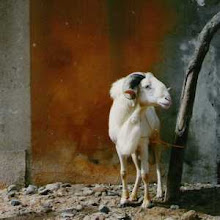Step 1 in slow photography is spending a long time studying the subject. As one guide enjoins, "pay more attention to your subject than to your camera." That's an order to actually use your eyes. It calls for consideration not just of what you think you see (a tree or a dog) but of the colors and shapes that present themselves. Thinking dog or tree can blind you to what you are really seeing—which is, in the end, a series of photons arranged in a way that for convenience you call dog. It may sound like semantics, but it makes all the difference. When you look carefully and avoid trying to label what you see, you inevitably start to notice things that you mightn't have otherwise.
If Step 1 is a long consideration of the subject, Step 2 is the exercise of creative choices—the greatest pleasure that our automatic cameras rob us of. What should be in the frame and what should be excluded is the most obvious decision, but there's also exposure, depth of field, and more technical choices beyond that. Making such deliberate decisions requires a little bit of courage, for you cannot blame the camera if the results are bad. Yet these choices are, to my mind, the whole game. They are what individualizes photography, what puts the stamp of your personality on the photo.
After taking these two steps, taking the photo becomes irrelevant. You've already had the experience. At this stage, you could shoot with a filmless camera, and the process could retain its power. In the logic of slow photography, the only reason to take photos is to gain access to the third stage, playing around in post-production, whether in a darkroom or using photo-editing tools, an addictive pleasure."
The Slow-Photography Movement, What is the point of taking pictures? / Tim Wu sur Slate

Aucun commentaire:
Enregistrer un commentaire